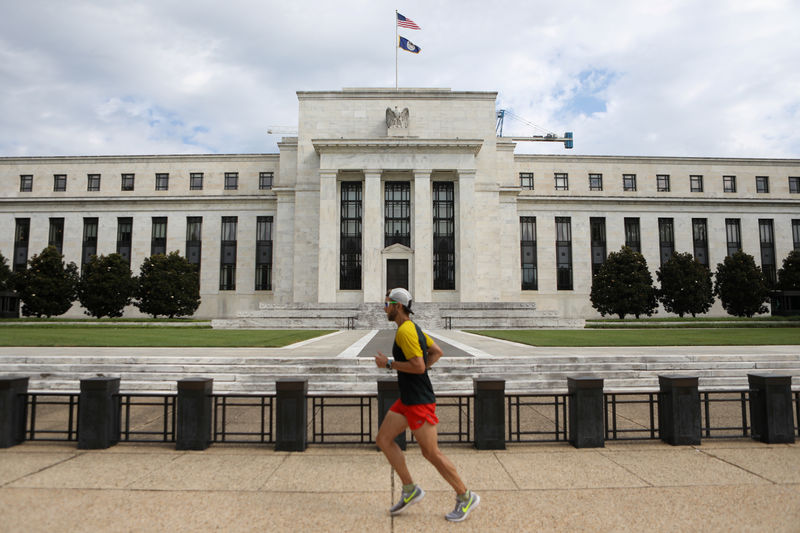By Yasin Ebrahim
Investing.com – The Federal Open Market Committee on Wednesday detailed plans to begin scaling back asset purchases later this month and said the bar to begin the liftoff in rates would be more "stringent."
The monthly bond purchases of $120 billion -- $80 billion in Treasuries and $40 billion in mortgage-backed securities – would be trimmed by $15 billion a month.
Under the taper plans, the Fed will reduce monthly Treasury purchases by $10 billion and mortgage-backed securities by $5 billion. Still, the Fed's balance sheet will continue to expand, but at a reduced pace.
The taper puts the Fed on track to end its bond-buying program by mid-2022, but Fed cautioned that the pace of bond-buying may change depending on incoming economic data.
"The Committee judges that similar reductions in the pace of net asset purchases will likely be appropriate each month, but it is prepared to adjust the pace of purchases if warranted by changes in the economic outlook."
At the conclusion of its two-day policy meeting on Wednesday, the Federal Reserve kept its benchmark rate in a range of 0% to 0.25%.
In the wake of surging inflation, market participants have ramped-up bets against central bank's current view on the path of interest rates hikes. Traders are pricing in two rate hikes in 2022, according to Investing.com's Fed rate monitor tool. That is well ahead of the Fed's current projection for a single rate hike by late 2022 or early 2023.
But Fed chairman Jerome Powell reiterated on Wednesday that the conditions for a liftoff in rates would be more stringent, and would require a further improvement in the labor market.
"[W]e don't think it's a good time to raise interest rates because we want to see the labor market heal further," Powell said. [W]e have very good reason to think that that will happen as the Delta variant declines."
“Our decision today to begin our tapering our asset purchases does not imply any direct signal regarding our interest rate policy. We continue to articulate a different and more stringent test for the economic conditions that would need to be met before raising the federal funds rate," Powell added.
In support of his more measured outlook on rate hikes, Powell suggested that factors including supply-chain shortages that have driven up inflation pressures will likely ease in the second and the third quarter next year.
